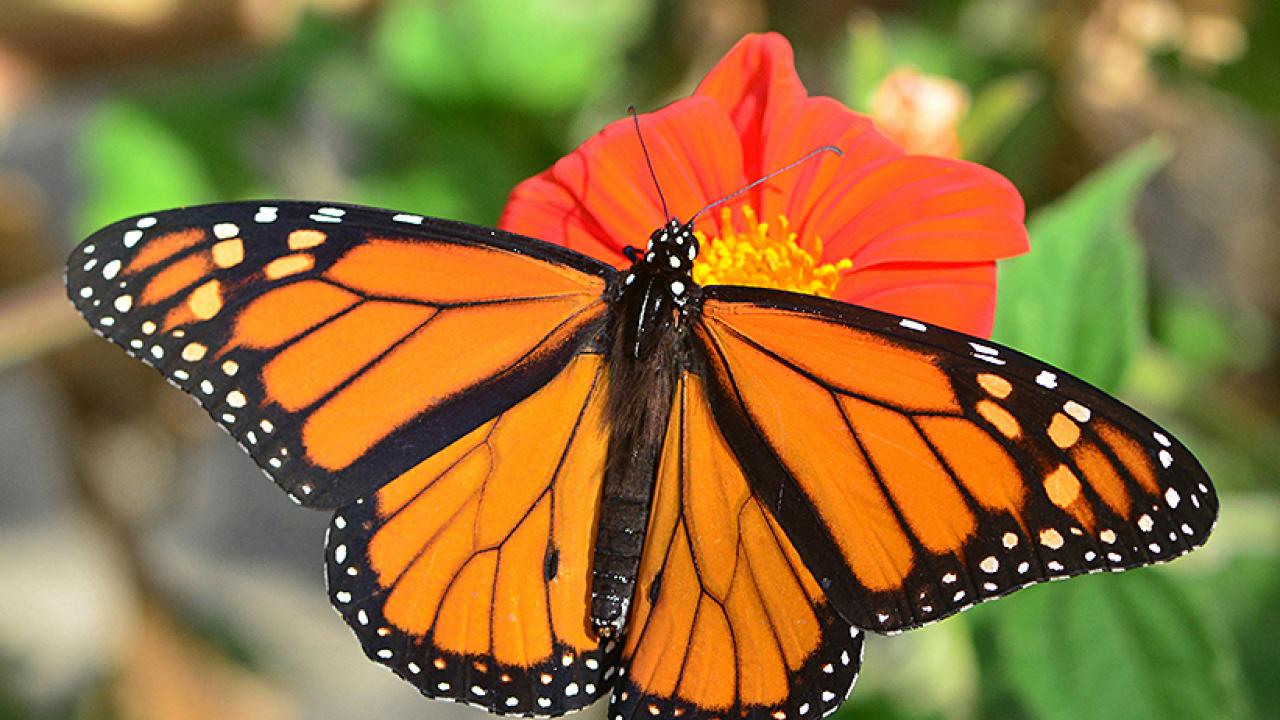Quick Summary
- Four overwintering sites studied
- Butterfly wings yield clues
- Heading north and south
A newly published study of California’s overwintering monarch butterflies confirmed many previous migratory studies. But the findings also showed some unexpected and surprising patterns of movement, reports a research team led by the University of California, Davis.
The study, published in the early online version of the print journal Ecography, examined the natal origins, or “birthplaces,” of butterflies at four California overwintering sites.
“We hope that this paper improves our understanding of where monarch butterflies grow up in western North America,” said lead researcher Louie Yang, a community ecologist in the UC Davis Department of Entomology and Nematology.
“Building a clearer understanding of where they come from could help us better understand many aspects of their ecology,” Yang said.
The monarch butterfly (Danaus plexippus) of North America overwinters along the California coast and in the central mountains of Mexico. Previous studies have indicated that the western monarchs — those that originate west of the Rocky Mountains — overwinter along the California coast, while the monarchs that develop east of the Rockies overwinter in central Mexico.
The new study
Yang and colleagues looked in more depth at the western monarch population. The researchers collected butterflies from the trees where they had gathered in four California overwintering sites in early December.
Those locations included two northern sites — Lighthouse Field State Beach and Moran Lake, both in Santa Cruz County — and two southern overwintering sites — Pismo State Beach in San Luis Obispo County and the Coronado Butterfly Preserve in Santa Barbara County.
The researchers examined the butterflies’ wings for shape, structure and telltale hydrogen isotopes. The different isotopes, known to be associated with precipitation in various regions in the United States, allowed the researchers to correlate the wing size and shape with how far the butterflies had migrated from their birthplaces.
Of the 114 overwintering butterflies sampled, they found that 30 percent developed in California’s southern coastal range, 12 percent in the northern coast and inland range, 16 percent in the central range, and 40 percent in the northern inland range.
Across all four overwintering sites, they found butterflies from a wide range of locations, although most were from the southern coast of California and the more distant northern inland U.S. But there were marked differences between the northern and southern overwintering sites. Most of the butterflies collected from the study’s two most northern overwintering sites originated in the southern coastal range, while most of the butterflies collected in the two most southern overwintering sites originated in the northern inland range (Idaho, Montana, Wyoming, eastern Oregon and Washington).
Collaborators and funding
Collaborating with Yang on this study were Dmitry Ostrovsky of the University of Colorado, Denver; and Matthew Rogers and Jeffery Welker, both of the University of Alaska.
The project was funded in part by a National Science Foundation Early Career Development Program grant and an NSF Major Research Instrumentation Program grant.
Media Resources
Louie Yang, Entomology and Nematology, (530) 754-3261, lhyang@ucdavis.edu
Kathy Keatley Garvey, Entomology and Nematology, 530-754-6894, kegarvey@ucdavis.edu
Pat Bailey, Strategic Communications, 530-219-9640, pjbailey@ucdavis.edu
